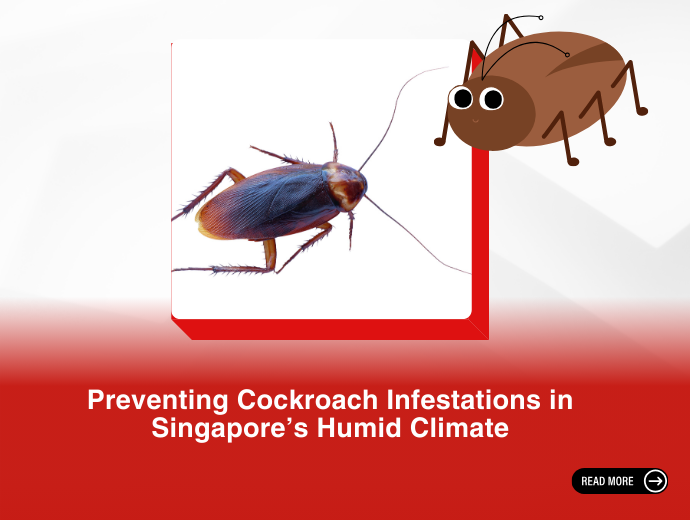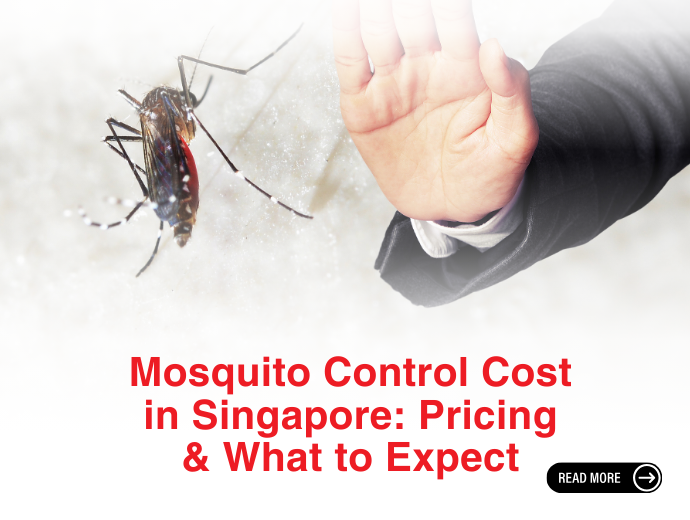Are you aware that more than 300 dengue cases were reported in Singapore just last week? As a matter of fact, this number has remained high, at above 300, since the start of 2024 - with no indications of declining in the near future (and enough signs of growing even further!).
.png?width=597&height=321&name=unnamed%20(47).png)
Source: National Environment Agency
The bigger concern is that these cases have not only reached alarming levels but have also witnessed an unprecedented upsurge. Clearly, there needs to be combined public and government action to combat the issue. A challenge there is that we are underscoring the risks of dengue and becoming complacent about the ongoing situation. So, it’s imperative to understand the factors causing this rapid dengue spread and proactively take measures to control it.
What's Causing The Upsurge In Dengue Cases: The Contributing Factors
Singapore has been making concerted efforts to tackle the upsurge in dengue cases. First of all, Singapore has deployed GraviTraps that serve as oviposition sites for Aedes mosquitoes. Another notable effort has been Project Wolbachia where male mosquitoes with Wolbachia bacteria are released regularly into an area by mosquito control professionals. Male mosquitoes with Wolbachia mate with wild female mosquitoes and their eggs will not hatch. Even with millions spent on prevention and the latest technology, dengue continues to be a concern with regular outbreaks. What can be the probable cause?
The growing number of dengue cases can be attributed to several probable causes, including:
Low Immunity Levels
Singapore, like many other developed nations, has seen a decline in natural immunity to dengue over the years. With improved healthcare and sanitation, fewer people are exposed to the virus during childhood, leaving a larger portion of the population vulnerable to infection later in life. This lack of immunity creates a conducive environment for dengue outbreaks to occur, as the virus can spread more easily among susceptible individuals.
Increased Viral Diversity
Singapore's status as a global hub brings with it the benefits of cultural exchange and economic growth, but it also introduces new challenges, such as increased viral diversity. With a steady influx of travellers from around the world, Singapore serves as a melting pot for different dengue virus strains. This diversity can lead to more unpredictable outbreaks, as different strains may interact in unexpected ways, making it harder to control the spread of the disease.
Continued Aedes Breeding
The Aedes mosquito, responsible for transmitting the dengue virus, remains a persistent presence in Singapore's urban environment. Factors such as stagnant water in discarded containers, construction sites, and even lush greenery provide breeding grounds for these mosquitoes. Additionally, Singapore's tropical climate creates favourable conditions for mosquito breeding and dengue transmission year-round. As urbanization continues to encroach upon natural habitats, the interaction between humans and disease-carrying vectors intensifies, further exacerbating the dengue problem.
Increasing Urbanization and Population Density
Singapore's rapid urbanization and population growth have led to higher population densities in residential areas. This, coupled with the proliferation of high-rise buildings and a bustling urban landscape, increases the likelihood of human-mosquito interactions. The proximity of people to potential mosquito breeding sites amplifies the risk of dengue transmission, as even a small oversight in mosquito control measures can have significant consequences in densely populated areas.
The Consequences
Health Crisis
Dengue fever presents a range of debilitating symptoms, including high fever, severe headaches, joint and muscle pain, nausea, and rash. In severe cases, dengue infection can progress to life-threatening conditions such as dengue hemorrhagic fever or dengue shock syndrome, characterized by severe bleeding, organ failure, and shock. The surge in dengue cases places a significant strain on healthcare resources, leading to longer wait times, overcrowded hospitals, and stretched medical personnel. This strain compromises the quality of care for all patients, impacting the overall healthcare system.
Economic Impact
The treatment of dengue fever and its complications can impose substantial financial burdens on individuals and healthcare systems. Hospitalization, medication, and supportive care contribute to escalating healthcare costs, diverting resources from other essential healthcare needs. Moreover, dengue fever often results in significant absenteeism from work or school due to illness or hospitalization, leading to a loss of productivity. The economic repercussions extend further as concerns about contracting dengue may deter tourists from visiting Singapore, resulting in reduced tourism revenue and employment opportunities in the tourism sector.
Social and Community Wellbeing
Fear of contracting the disease may lead to changes in behaviour, such as avoiding outdoor activities or travel. The disruption of daily life is another consequence, as public health campaigns and interventions may impose restrictions on movement or outdoor gatherings to prevent mosquito breeding and transmission, affecting social interactions and overall well-being.
How To Prevent Dengue: Key Dengue Prevention Strategies
Individual Strategies:
Individuals have a personal responsibility to control dengue through two key strategies:
Strategy 1: Mozzie Wipeout ‘B-L-O-C-K’
The National Environment Agency (NEA) suggests that people must follow the B-L-O-C-K steps to prevent the spread of dengue.
- B: Break up hardened soil
Aedes mosquitoes often lay eggs in soil that has become hardened and retains water. Breaking up hardened soil helps to disrupt potential breeding sites.
- L: Lift and empty flowerpot plates
Flowerpot plates can collect water and provide ideal breeding grounds for mosquitoes. Lifting and emptying these plates regularly prevents stagnant water accumulation.
- O: Overturn pails and wipe their rims
Pails and containers left outdoors can collect rainwater and become breeding sites for mosquitoes. Overturning these containers and wiping their rims prevents water accumulation and disrupts mosquito breeding.
Water-filled vases can attract mosquitoes for breeding. Changing the water in vases regularly prevents mosquito larvae from developing.
- K: Keep roof gutters clear and place BTI insecticide inside
Clogged roof gutters can trap water and create mosquito breeding sites. Keeping gutters clear of debris and placing BTI (Bacillus thuringiensis israelensis) insecticide inside helps to control mosquito larvae.
Strategy 2: ‘S-A-W’ Actions
The 'S-A-W' actions are recommended by NEA for individuals diagnosed with or suspected to be infected with dengue to prevent further mosquito bites and transmission of the Dengue virus. These stand for:
- S: Spray insecticide in dark corners around the house
Dark corners and hidden areas can serve as resting spots for mosquitoes. Spraying insecticide in these areas helps to kill adult mosquitoes and reduce the risk of further transmission.
- A: Apply insect repellent regularly
Using insect repellent containing DEET, picaridin, or oil of lemon eucalyptus on exposed skin helps to repel mosquitoes and prevent bites.
- W: Wear long-sleeve tops and long pants
Wearing clothing that covers exposed skin reduces the risk of mosquito bites. Long-sleeve tops and long pants provide additional protection against mosquito-borne diseases like dengue.
Professional Strategies:
Apart from controlling at individual levels, engaging a professional to tackle the problem is also advisable. Through professional assistance, you can go for the following strategies:
Dual Misting: Larviciding with Adulticiding
Dual misting involves the application of a fine mist of pesticide solution to landscaping and potential breeding areas. This solution typically contains a combination of a biological control agent and an adulticide. The biological control agent targets mosquito larvae, inhibiting their development, while the adulticide targets adult mosquitoes, reducing their population. This method effectively interrupts the mosquito life cycle and is considered safe and eco-friendly. Dual misting provides an alternative to thermal fogging, offering targeted control without adverse environmental impacts.
Targeting at Source for Reduction:
Source reduction focuses on identifying and eliminating conditions that are conducive to mosquito breeding around properties. Pest management professionals conduct thorough inspections to identify standing water and other potential breeding sites. Recommendations are then provided to address these issues, such as removing stagnant water from containers, clearing clogged drains, and maintaining proper drainage systems. By eliminating breeding sites, source reduction reduces the mosquito population and minimizes the risk of dengue transmission.
Continuous Vigilance
Monitoring the effectiveness of dengue prevention measures is essential for assessing the impact and adjusting strategies as needed. Larval count monitoring, facilitated by specialized software, tracks larvae populations and maps trap locations. This provides transparent and real-time insights into the mosquito situation around properties. By monitoring larval populations, authorities can identify areas with high mosquito activity and prioritize intervention efforts, ensuring targeted and efficient dengue prevention.
Mosquito Traps
Trapping methods aim to capture and control adult mosquitoes, particularly female Aedes mosquitoes, which are responsible for transmitting the dengue virus. One example of an effective mosquito trap is the OriTrap, designed to attract and trap Aedes mosquitoes, the primary vectors of dengue virus transmission. These traps have water infused with a mixture of slow-acting larvicide and fungus. As mosquitoes lay eggs in the trap, they come into contact with the bioactives, affecting their survival and biting behaviour. This interrupts the dengue transmission cycle by reducing the adult mosquito population and preventing the spread of the virus. Trapping is an effective supplementary strategy to larval control and source reduction in comprehensive dengue prevention efforts.
In Conclusion: Staying Vigilant to Combat Dengue
The upsurge in dengue cases in Singapore requires a collective effort to combat the spread of this potentially life-threatening disease. It is crucial for both the government and individuals to take proactive measures in dengue prevention. By staying vigilant and adopting comprehensive prevention strategies, we can effectively reduce the risks associated with dengue.
Remember, prevention is always better than cure. Take the necessary steps to eliminate mosquito breeding sites, use protective measures, and stay informed about dengue prevention methods. Together, we can navigate the upsurge in dengue and protect ourselves and our community from this growing nightmare.
If you’re looking for mosquito control treatment, feel free to reach out to us at ORIGIN.

.png)
.png?width=597&height=321&name=unnamed%20(47).png)


.png)
